Geology Reference
In-Depth Information
Porosity and permeability are important physical properties
of Earth materials and are largely responsible for the amount,
availability, and movement of groundwater. Water soaks into
the ground because soil, sediment, and rock have open spaces
or pores.
Porosity
is the percentage of a material's total vol-
ume that is pore space. Porosity most often consists of the
spaces between particles in soil, sediment, and sedimentary
rocks, but other types of porosity include cracks, fractures,
faults, and vesicles in volcanic rocks (
Permeability is dependent not only on porosity, but
also on the size of the pores or fractures and their intercon-
nections. For example, deposits of silt or clay are typically
more porous than sand or gravel, but they have low per-
meability because the pores between the particles are very
small, and molecular attraction between the particles and
water is great, thereby preventing movement of the water. In
contrast, the pore spaces between grains in sandstone and
conglomerate are much larger, and molecular attraction on
the water is therefore low. Chemical and biochemical sedi-
mentary rocks, such as limestone and dolostone, and many
igneous and metamorphic rocks that are highly fractured
can also be very permeable provided that the fractures are
interconnected.
The contrasting porosity and permeability of familiar
substances are well demonstrated by sand versus clay. Pour
some water on sand and it rapidly sinks in, whereas water
poured on clay simply remains on the surface. Furthermore,
wet sand dries quickly, but once clay absorbs water, it may
take days to dry out because of its low permeability. Neither
sand nor clay makes a good substance in which to grow crops
or gardens, but a mixture of the two, plus some organic mat-
ter in the form of humus, makes an excellent soil for farming
and gardening (see Chapter 6).
A permeable layer transporting groundwater is an
aqui-
fer
, from the Latin
aqua
, “water.” The most effective aquifers
are deposits of well-sorted and well-rounded sand and gravel.
Limestones in which fractures and bedding planes have been
enlarged by solution are also good aquifers. Shales and many
igneous and metamorphic rocks make poor aquifers because
they are typically impermeable, unless fractured. Rocks such
as these and any other materials that prevent the movement
of groundwater are
aquicludes
.
Figure 13.1).
Porosity varies among different rock types and is de-
pendent on the size, shape, and arrangement of the material
composing the rock (Table 13.1). Most igneous and meta-
morphic rocks, as well as many limestones and dolostones,
have very low porosity because they consist of tightly inter-
locking crystals. Their porosity can be increased, however, if
they have been fractured or weathered by groundwater. This
is particularly true for massive limestone and dolostone,
whose fractures can be enlarged by acidic groundwater.
By contrast, detrital sedimentary rocks composed
of well-sorted and well-rounded grains can have high
porosity because any two grains touch at only a single
point, leaving relatively large open spaces between the
grains (Figure 13.1a). Poorly sorted sedimentary rocks,
on the other hand, typically have low porosity because
smaller grains fill in the spaces between the larger grains,
further reducing porosity (Figure 13.1b). In addition, the
amount of cement between grains can decrease porosity.
Porosity determines the amount of groundwater that Earth
materials can hold, but it does not guarantee that the water
can be easily extracted. So, in addition to being porous, Earth
materials must have the capacity to transmit fl uids, a property
known as
permeability
. Thus, both porosity and permeability
play important roles in groundwater movement and recovery.
◗
Some of the precipitation on land evaporates, and some en-
ters streams and returns to the oceans by surface runoff; the
remainder seeps into the ground. As this water moves down
from the surface, a small amount adheres to the material it
moves through and halts its downward progress. With the
exception of this
suspended water
, however, the rest seeps
further downward and collects until it fi lls all of the avail-
able pore spaces. Thus, two zones are defi ned by whether
their pore spaces contain mostly air, the
zone of aeration
,
or mostly water, the underlying
zone of saturation
. The
surface that separates these two zones is the
water table
(
Pore space
Openings resulting
from solution
Fractures
Figure 13.2).
The base of the zone of saturation varies from place to
place, but usually extends to a depth where an impermeable layer
is encountered or to a depth where confi ning pressure closes all
open space. Extending irregularly upward a few centimeters to
several meters from the zone of saturation is the
capillary fringe
.
Water moves upward in this region because of surface tension,
much as water moves upward through a paper towel.
In general, the confi guration of the water table is a subdued
replica of the overlying land surface; that is, it rises beneath hills
◗
◗
Figure 13.1
Porosity A rock's porosity depends on the size,
shape, and arrangement of the material composing the rock.

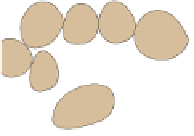
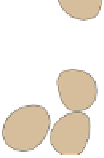
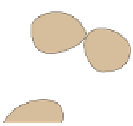



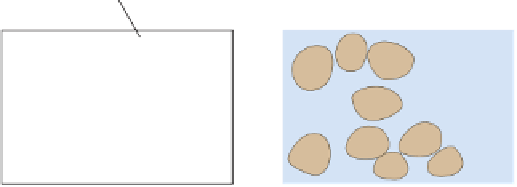
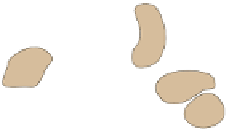



























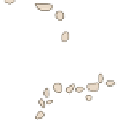


















































































































































































































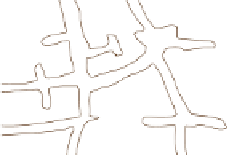
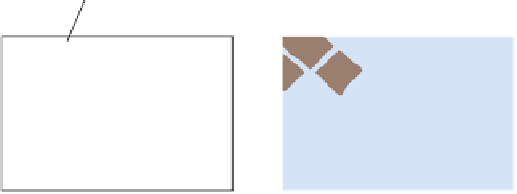








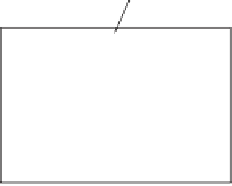

Search WWH ::

Custom Search